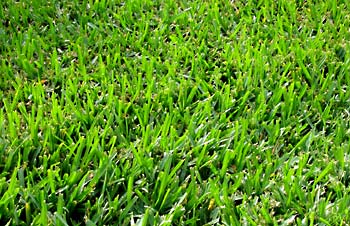Spring Landscaping Phoenix: Bermuda Grass
Blog, Phoenix Landscape Maintenance, Phoenix Landscaping
 Bermuda grass is a perennial grass that loves the warm sunny climate of Arizona making it the top choice for Phoenix lawn landscaping. Bermuda Grass grows easily from planted seed or sod and its creeping growth pattern provides excellent coverage. Maintenance and mowing of Bermuda grass is moderate adding to the benefits of using this grass for your lawn. Proper transitioning will allow you to spend more time enjoying your lawn and less time maintaining it.
Bermuda grass is a perennial grass that loves the warm sunny climate of Arizona making it the top choice for Phoenix lawn landscaping. Bermuda Grass grows easily from planted seed or sod and its creeping growth pattern provides excellent coverage. Maintenance and mowing of Bermuda grass is moderate adding to the benefits of using this grass for your lawn. Proper transitioning will allow you to spend more time enjoying your lawn and less time maintaining it.
All varieties of Bermuda grass turn straw-colored and become dormant during winter months. Bermuda grass recovers rapidly in the Spring and begins producing shoots when nighttime temperatures remain above 60 degrees for several days and the soil reaches a temperature of 65 degrees at a depth of 4 inches. It generally takes 80+ consistent day highs in temperatures to achieve this level of temperature in the soil.
Ryegrass is typically used in Phoenix landscaping for the winter. To ensure the full and rapid re growth of Spring Bermuda you should accelerate the death of Ryegrass by letting it dry out in early May. Two weeks without watering is usually sufficient to kill the Ryegrass. After the Ryegrass has turned brown, resume watering to encourage the Bermuda out of dormancy.
Bermuda is divided to into two main categories, common and hybrids. The type of Bermuda you used for your Phoenix lawn landscaping will determine how you will maintain it.
A less dense grass can be mowed at 2 inches and will still look good, while high density hybrids such as Tifway, Tifway II, TifSport, Bob-Sod, or Santa Ana have to be kept shorter as brown patches will appear if allowed to grow this tall. A medium density hybrid or common Bermuda is the best choice for the average Arizona homeowner as they are less labor intensive, use fewer resources, and overseed well.
Moisture also plays an important role in spring transition of Bermuda grass. While dry conditions affect the transition and re greening of Bermuda grass a mores serious issue to watch for is too much moisture. Dry conditions can be remedied with irrigation, but when Bermuda grass is exposed to prolonged wet conditions in the spring, the excess moisture depletes its energy reserve and prevents new growth. Be sure to provide effective drainage for your lawn.
Fertilization practices have been shown to have striking effects on spring recovery as have irrigation and proper mowing . However, timing is everything! If you apply to early you place your lawn at risk of injury from late spring freeze.
The proper time to apply ammonia nitrates to your lawn is after the danger of a severe freeze is past, but before complete recovery. Nitrogen applied at that time will promote leaf growth which and root development which ensures that you and your family can enjoy a lush healthy lawn year after year.
Following these simple tips will allow your Phoenix lawn landscaping to remain lush and green year round!